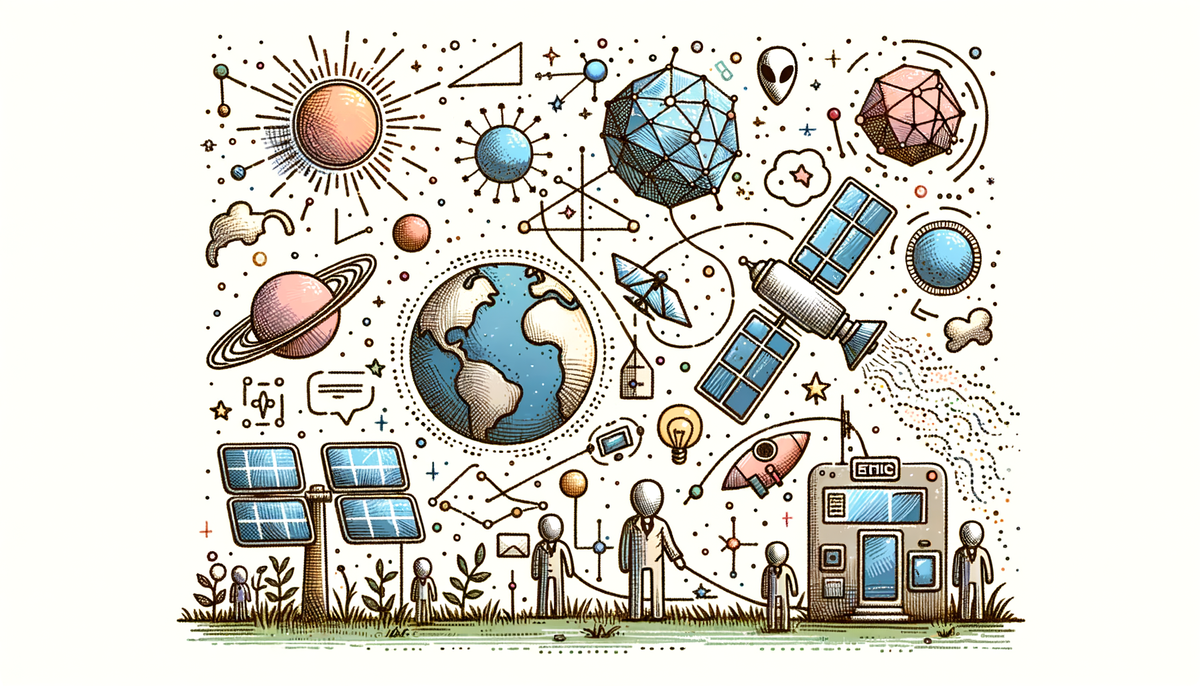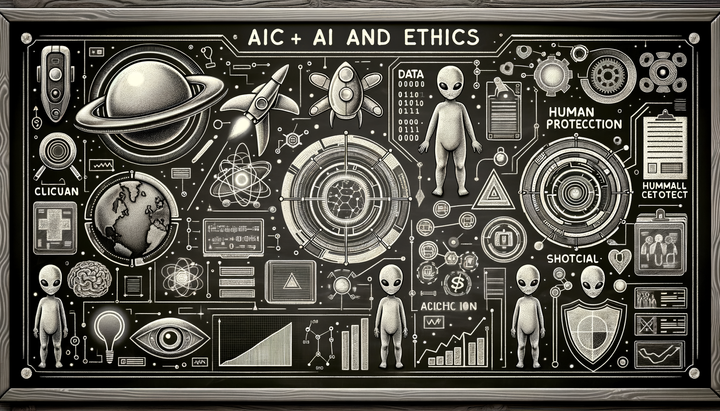AI Updates: Amazon's AI Shopping Assistant and Future Tech Innovations

This article offers an in-depth exploration of the evolving landscape of artificial intelligence, weaving through diverse sectors—from cutting-edge hardware innovations with Snapdragon-powered Surface devices and the nuanced challenges of AI in legal practice, to the strategic rivalry between US and Chinese tech giants, breakthroughs in autism diagnosis, revolutionary voice AI applications, AI-driven data center modernization, and the transformation of retail with AI shopping assistants. By examining these multifaceted themes and linking them with insights from related AI.Biz posts, we uncover how AI continues to reshape industries, enhance experiences, and pave the way for a future marked by both promise and complexity.
Emerging Hardware Trends: Smaller Surface PCs and Snapdragon Advancements
Recent reports hint that Microsoft may be preparing to unveil new, smaller Surface devices powered by Qualcomm’s Snapdragon chips. This potential innovation marks a notable pivot in the hardware segment, where the emphasis on portability meets the demands of modern computing. Traditionally, Microsoft’s Surface line has been celebrated for its blend of design, power, and versatility. Now, with speculation swirling around a 12-inch Surface Pro and an even more portable Surface Laptop, the company appears keen to diversify its offerings.
Historically, technology has cycled between prioritizing raw performance and emphasizing mobility. The rumored shift to a 12-inch display not only indicates a reaction to market demand for more portable devices but also emphasizes a balanced trade-off between computing power and convenience. Qualcomm’s Snapdragon X Plus, a strong contender for such designs, has shown promising performance improvements, even though its capabilities are influenced by the reduced form factors on which it must operate.
This move can be seen as an intentional response to the evolving consumer landscape. With Microsoft's upcoming 50th anniversary celebrations generating excitement, the timing suggests that the company aims to blend a rich legacy with future-forward technology. As a reader of our in-depth discussions on technological innovations, you may find it interesting to review our article on AI innovations transforming everyday experiences and industries, which similarly emphasizes the role of pioneering tech in shaping consumer products.
"I am confident that AI is going to have a huge impact on how we live and work. The real question is, how are we going to harness that power for good?" – Tim Cook, CEO of Apple, 2016
This perspective aligns with the broader trend where AI not only enhances device functionality but also underpins strategic decisions in hardware. Beyond the performance specifics, it hints at a future where smart, AI-driven design decisions lead to more adaptive and user-centric devices. And while these new surfaces might deliver slightly lower raw performance due to their compact nature, they promise to redefine the balance between mobility and functionality in personal computing. Such innovations are a natural progression in our continuous quest for smarter devices that cater both to everyday consumers and professional users working in dynamic environments.
AI in Legal Practice: Complementing, Not Replacing, the Human Touch
While artificial intelligence has made impressive strides in areas such as legal research and document automation, challenges remain when it comes to replacing the nuanced decision-making of human attorneys. AI-based tools like ChatGPT have demonstrated the ability to rapidly process legal information, but when it comes to real-life applications for legal disputes, the human element is irreplaceable. Consider, for example, the delicate craft of negotiating landlord-tenant disputes or handling discrimination claims.
AI systems are adept at extracting and processing data, defining legal concepts, and even suggesting potential strategies based on precedent. However, the inherent human aspects—such as reading a witness's body language, interpreting a judge's mood, or even adjusting strategies in real time during negotiations—are areas where human attorneys excel. In complex cases, a human expert can tailor arguments and navigate unforeseen developments in court, ensuring confidentiality and ethical integrity in ways that current AI cannot.
This dichotomy between efficient automation and nuanced strategy exposes the limitations of AI in legal settings. As some argue, relying solely on technology could lead to oversights, particularly when each legal scenario comes with its unique human variables. With legal disputes, subtle factors such as emotional intelligence, empathy, and ethical consideration play pivotal roles in the judicial process.
To further contextualize this, one can reflect on an age-old proverb: "A chain is only as strong as its weakest link." In legal practice, while artificial tools can strengthen the research and preparatory phases, the ultimate outcomes depend on a tightly knit strategy that only experienced attorneys can provide. Therefore, despite the allure of faster, AI-driven solutions, the path to justice still winds through the critical insights offered by human legal professionals.
For those curious about the broader implications of AI in sensitive industries, revisiting our comprehensive analysis on the AI revolution and the battle for the future can offer a reflective perspective on how technology influences decision-making across various sectors.
US Versus China: The Strategic Battleground for AI Dominance
The global race for artificial intelligence supremacy is as competitive as it is transformative. A recent analysis comparing AI developments in the United States and China reveals stark differences in strategy, innovation, and infrastructure. While Chinese initiatives like DeepSeek have garnered impressive attention, U.S. tech giants such as Amazon continue to maintain distinctive advantages that are rooted in a more diversified and robust technological ecosystem.
One memorable aspect of the American approach is the vast expanse of accessible data. This treasure trove not only supports advanced machine learning models but also fosters a culture of freewheeling innovation. With unparalleled access to diverse datasets—ranging from consumer behavior to intricate market trends—U.S. companies can fine-tune AI algorithms with precision.
Furthermore, the strong digital infrastructure in the United States, backed by comprehensive cloud services, enables rapid deployment and scaling of AI initiatives. Companies like Amazon have capitalized on these elements, consistently leveraging their established cloud platforms to accelerate breakthroughs in AI. The unwavering presence of venture capital and an enduring spirit of innovation further bolster this technological advantage.
"The Matrix is everywhere. It is all around us." – Morpheus, The Matrix
In contrast, China’s regulatory landscape, with its strict government oversight, offers both opportunities and constraints. While Chinese tech entities have made significant inroads in AI technologies, the regulatory barriers and limited data flexibility can sometimes impede the speed and diversity of innovation. Additionally, talent retention issues add a layer of complexity, as the U.S. remains a magnet for global tech experts who drive continuous AI advancements.
Such strategic differences underscore how fundamental elements like data access, infrastructure resilience, and innovation ecosystems play crucial roles in the global AI race. For a deeper dive into how these strategies are reshaping industries, you might explore our discussion in NetSuite’s expansion of AI capabilities and the rise of intelligent solutions, where similar themes of competitive advantage are explored in greater detail.
Advancing Healthcare: Rethinking Autism Diagnosis with AI
The application of artificial intelligence in medicine has paved the way for transformative changes in diagnostic methodologies, particularly in the complex realm of autism spectrum disorder (ASD) diagnosis. Historically, the process of diagnosing autism has largely depended on clinical evaluations that, while expert, can sometimes be subjective and vary between practitioners. Now, by leveraging machine learning algorithms, clinicians can analyze large datasets and detect subtle cognitive markers that may have been previously overlooked.
Innovative approaches that use multi-modal imaging techniques, coupled with AI-driven pattern recognition, are emerging as powerful tools in this diagnostic revolution. By meticulously analyzing brain structures and functions, these systems provide a comprehensive picture of neurological patterns associated with autism, thereby enhancing diagnostic accuracy. Early detection, as many research studies emphasize, can significantly improve the outcomes for individuals on the autism spectrum, enabling interventions that are both timely and tailored.
However, the marriage of AI with clinical practice comes with its own set of challenges. Data privacy concerns, the risk of algorithmic bias, and ensuring that medical practitioners are fully equipped to interpret AI insights are prominent issues that must be diligently managed. The ideal vision is a model where AI operates as a supportive tool—an aide-de-camp—that enhances the clinician’s expertise rather than attempting to replace it outright.
In practice, this means developing systems that are not only technologically advanced but also ethically sound and transparent. The goal is to empower clinicians with a more precise toolkit without compromising the indispensable human judgment that forms the backbone of patient care. If these challenges are navigated successfully, AI-enhanced autism diagnosis could become a cornerstone of modern healthcare, driving a new era of personalized treatment strategies and improved patient outcomes.
For those intrigued by the intersection of clinical expertise and artificial intelligence, our ongoing coverage on groundbreaking AI innovations in everyday industries offers additional perspectives and detailed case studies that highlight similar themes of transformative potential.
Voice AI Evolution: Making Speech More Human with Groq and PlayAI
Voice interfaces have quickly advanced from simple command-recognition systems to sophisticated, real-time conversational agents. A recent collaboration between Groq and PlayAI has further pushed the envelope in the realm of voice artificial intelligence. Their innovative text-to-speech model, known as Dialog, is designed to generate output that is strikingly near-human in its natural intonation, rhythm, and contextual sensitivity.
One of the remarkable aspects of Dialog is its dual-language support—offering both English and Arabic variants. This pioneering advancement in the Middle East marks a critical step towards making voice AI accessible to a broader global audience. By incorporating Groq’s high-speed inference capabilities, which allow for text generation up to 140 characters per second (a significant leap from conventional GPU-based systems), Dialog is not only fast but also scalable, providing unprecedented responsiveness in interactive applications.
At the core of this breakthrough is the adaptive speech contextualizer (ASC), a novel architecture that maintains the flow and context of conversation, enabling more coherent and natural exchanges. With the ASC, Dialog can adjust tone and emotion to better align with the conversational context, making interactions feel more fluid and less robotic.
This development has wide-ranging implications in numerous fields. Enterprises looking to enhance customer service interactions can deploy Dialog as a virtual agent capable of addressing queries efficiently, while media companies might use it to create more accessible content through automated narration. Even educational platforms can benefit from the tool’s quick response times and natural conversational quality, making learning more interactive.
Moreover, early engagements and tests have indicated a significant preference for Dialog over other models, highlighting its potential to redefine what it means for AI to "speak." As voice assistants and conversational agents become increasingly integrated into our daily lives, innovations like these set the stage for a more natural, human-like interaction with technology.
For a broader context on how AI is impacting various aspects of modern life, including voice technologies, you can check out our evolving updates in voice AI innovations and sustainable data centers, which delves into similar trends driving industry transformation.
Data Centers Reinvented: KT Cloud’s AI-Driven Demonstration Center
In the ever-evolving sphere of technology, data centers sit at the intersection of sustainability and high-performance computing. KT Cloud's ambitious plan to launch its AI Data Center Demonstration Center in Seoul is a testament to this transformation. Slated to open in November 2025, this state-of-the-art facility is designed to serve as an incubator for cutting-edge AI-driven solutions that optimize data center operations.
At the heart of KT Cloud’s initiative is the intent to address two critical priorities: energy efficiency and operational effectiveness. By integrating advanced AI technologies, the center is set to revolutionize cooling systems, power management, and network operations. Incorporating liquid cooling techniques alongside renewable energy sources, the demonstration center aligns closely with global sustainability goals while ensuring the high reliability demanded by today’s data-driven applications.
This approach not only enhances efficiency but also paves the way for a future where data centers operate in a fully autonomous, eco-friendly manner. With an independent AI Data Center on the horizon by 2028, KT Cloud is positioning itself at the forefront of a movement that could redefine how digital infrastructures are managed worldwide.
The strategic partnership with tech behemoths, such as Microsoft, reinforces KT Cloud's commitment to innovation and security. It demonstrates a convergence of AI, cloud technology, and sustainable practices that is reflective of a broader trend in the tech industry—a trend discussed in our article on voice AI innovations and sustainable data centers.
"I imagine a world in which AI is going to make us work more productively, live longer, and have cleaner energy." – Fei-Fei Li, The Quest for Artificial Intelligence
This vision underscores the strategic importance of aligning operational efficiency with environmental stewardship. By harnessing AI to manage the immense power requirements and complex cooling challenges of modern data centers, KT Cloud is spearheading a model that could set new standards for operational sustainability and reliability in critical infrastructure.
Retail Revolution: Amazon’s AI Shopping Assistant “Interests”
The realm of e-commerce is witnessing yet another transformative leap as Amazon introduces an AI Shopping Assistant known as “Interests.” Designed to personalize consumer experiences, this tool sifts through Amazon’s vast product catalog to curate recommendations that align with individual lifestyle preferences and budget considerations. Imagine having a personal shopping guide that understands your unique tastes—from specialized sports gear to niche coffee accessories—and suggests exactly what you might need.
At its core, the effectiveness of “Interests” lies in its natural language processing capabilities. Shoppers can casually speak or type requests like “brewing tools and gadgets for coffee lovers,” and the AI immediately interprets these queries to provide tailored results. This thoughtful integration of conversational AI redefines the traditional shopping experience, reducing the overwhelm of choice with smart, focused recommendations.
Early reviews suggest that while the underlying technology parallels earlier recommendation systems, the enhanced interface and contextual understanding elevate the overall experience. Market analysts have noted that features like these are just the beginning and represent a broader shift whereby retailers harness AI to create a more engaging and intuitive purchasing journey.
This evolution in retail echoes the broader narrative of technological innovation transforming everyday experiences. As companies integrate AI-driven personalization into their business models, consumers are poised to benefit from more than just convenience—they are stepping into a new era of interactive, data-informed shopping. For further illustrations of AI’s profound impact on consumer experiences, you might want to read our feature on AI’s latest innovations transforming everyday experiences, where the fusion of technology and daily life is explored in rich detail.
Reflecting on AI’s Multifaceted Impact
Across these diverse sectors—hardware, legal services, global tech strategy, healthcare, voice AI, data center optimization, and retail—one common thread unites them: the transformative potential of artificial intelligence. Each domain leverages AI’s strengths differently, whether it’s simplifying complex human tasks, powering advanced customer engagements, optimizing infrastructure for sustainability, or creating entirely new paradigms for interaction.
This multifaceted influence calls for a measured approach in integrating AI into everyday systems. It is crucial to recognize both its immense capabilities and inherent limitations. As we continue to embrace AI, fostering robust cross-disciplinary dialogues and research becomes ever more important to ensure ethical, responsible, and effective implementations. By balancing technological innovation with human expertise, industries across the board can harness AI as a driving force for progress.
With vibrant discussions and continuous breakthroughs, the current landscape offers a rich tapestry of opportunities and challenges. As an individual passionate about technology, I am often reminded of how seemingly disparate innovations converge to form a coherent vision of the future. Whether it is through a clinical tool that refines autism diagnosis, a voice assistant that makes digital interactions feel natural, or a smart shopping assistant that understands our unique tastes, AI is steadily but surely redefining what is possible.
In the words of one great innovator, every advancement is a step towards a more interconnected, efficient, and personalized world. While the debate on the scope and limits of AI is ongoing, its potential for good remains undeniable. As we stand on the brink of these new chapters in technology, it is both inspiring and humbling to witness the possibilities that lie ahead.
Further Readings
For additional insights and updates on the many facets of AI development, consider exploring these related articles on our website:



Comments ()